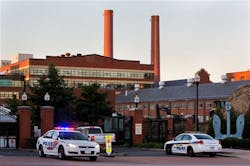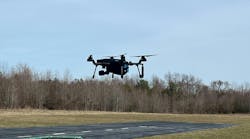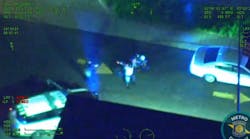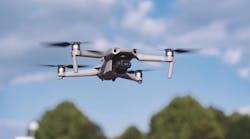The Navy Yard shooting rampage is the latest in a series of attacks that have brought troops into the cross hairs on military posts, and it raises new questions about the safety of installations.
It's the worst incident of its kind since Army Maj. Nidal Hasan killed 13 people at Fort Hood in 2009, but there have been others in recent years.
Just three months ago, a retired Army sergeant allegedly shot his wife in a building at Joint Base San Antonio-Fort Sam Houston.
"It's disturbing that the place you would expect to have the most security ends up being a (place) of mass murder," said retired Army Lt. Col. Jeffrey Addicott, who heads St. Mary's Center for Terrorism Law.
"We saw that, of course, at Fort Hood and now at the Washington Navy Yard. Some of the largest incidents have occurred on very secure facilities."
Military posts often are perceived as safe havens where war-weary troops can let down their guard. But the reality is far from that after a string of shootings and one foiled terrorist plot at Fort Hood, when a soldier who had planned to attack the base was caught with bomb-making materials and a handgun at his hotel in Killeen.
Still, after the Hasan massacre, motorists driving onto military installations are rarely searched. Random searches are conducted at Joint Bases Randolph, Lackland and Fort Sam Houston in San Antonio, but Addicott called those few and far between.
He said that after showing his identification card to a Navy Yard guard during a recent visit, he was waved though.
Nothing is yet known about the motive of the Navy Yard shooter, Aaron Alexis, or how he managed to enter the Naval Sea Systems Command building, but security there is slightly tighter than at bases here.
Those working in buildings on the Navy Yard enter a turnstile after swiping a pass, Addicott said. Others go through a more involved security procedure that includes a metal detector search. The same process is used at the Pentagon.
Tens of thousands of workers, many of them civilians, drive onto installations in San Antonio daily. Those without ID cards have to stop at security stations to obtain passes, but they aren't searched or required to go through a metal detector.
They rarely encounter armed police once inside buildings such as the Army Medical Department Center and School's Willis Hall, a classroom complex in San Antonio, where, federal authorities say, retired Sgt. Alvin Leon Roundtree shot his estranged wife in June.
She survived, and Roundtree was indicted in July on federal charges of assault with intent to commit murder.
There are no metal detectors in that building, but access is restricted, as it is in the Navy Yard headquarters. Security cameras at Willis Hall are monitored, but some first-floor offices have doors that open to a walkway outside the building. Those outside can access the porch.
Army Medical Department Center and School spokesman Phil Reidinger said he didn't know how Roundtree got into the building June 10 and didn't know whether access changes have been made.
Once the shooting began at the Navy Yard, a "shelter-place" order was issued for those working there.
That's standard procedure, developed in the wake of shootings at Fort Hood, Columbine and Virginia Tech.
"I think recent events have shown nobody is immune from this type of thing, and the best we can do is be aware this can happen and to prepare for the eventuality, which we do," said Brent Boller, a Joint Base San Antonio spokesman, adding that "people on our installations are aware of what lockdown means."
Addicott suggested arming officers and enlistees, but "there's no way to make it safe."
Copyright 2013 - San Antonio Express-News
McClatchy-Tribune News Service



